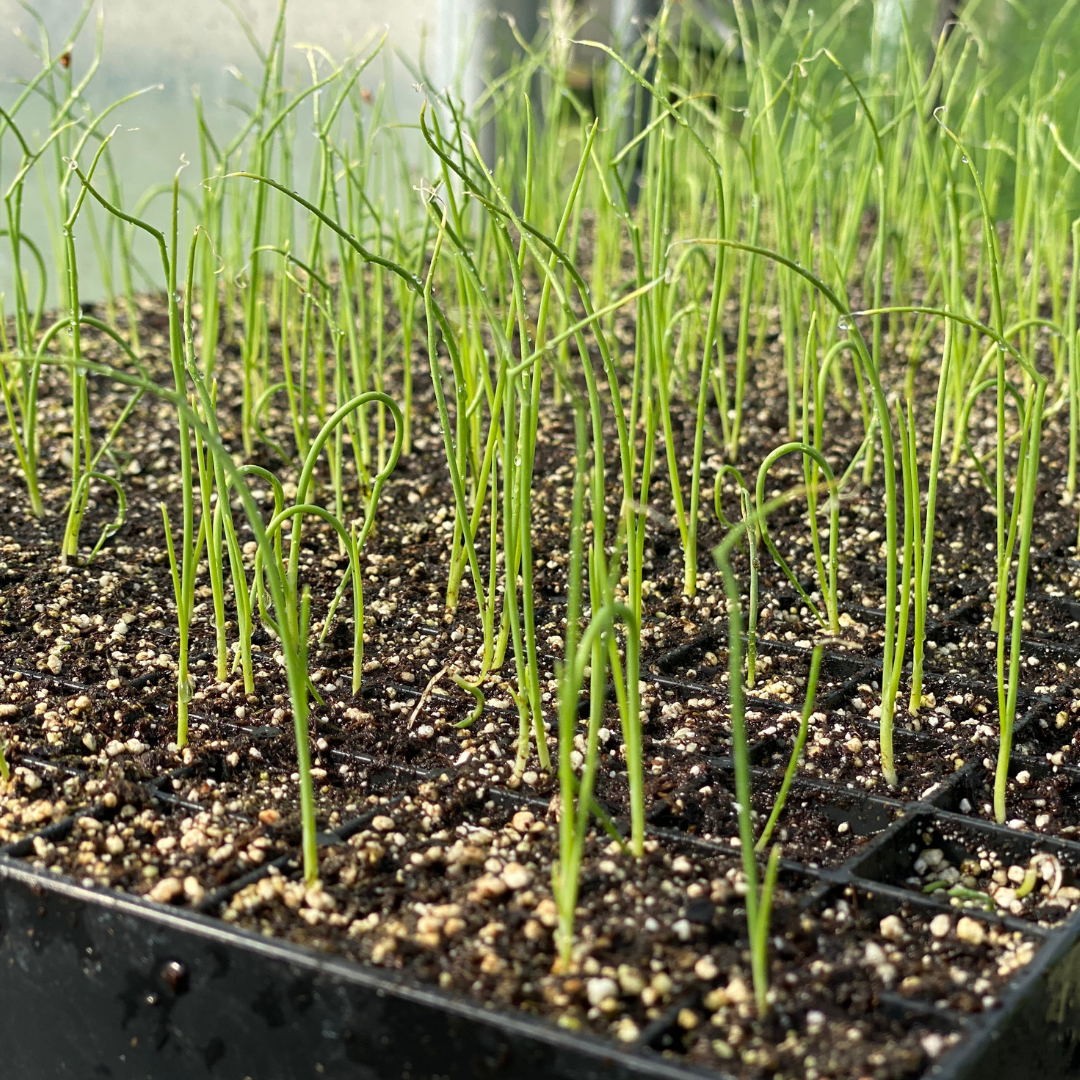Timon Onion Seed
Timon Onion Seed
Couldn't load pickup availability
Day Length Type
Day Length Type
Short-Day
Seed Type
Seed Type
F1 Hybrid (Untreated)
Seeds Per Pack
Seeds Per Pack
200
Days to Maturity
Days to Maturity
180
Disease Resistance
Disease Resistance

Why Grow Timon Onion?
Sweet Jumbo Onions Timon is a hybrid, short-day onion variety that consistently yields jumbo sweet onions every year. These extra-large onions are mostly round and slightly-flattened, making them easy to slice for sandwiches, burgers, and more! Round sweet onions like Timon typically have a longer storage potential than the flatter sweet onions.
Uniform and Consistent Timon has a moderate resistance to pink root and is remarkably uniform and consistent. We rarely get any runts when growing this variety, even when planting a 30' or longer double row of them. They're all big, round, beautiful, and delicious! They're more bolt-resistant than other round sweet onion varieties, which allows them to store longer after being harvested.
Timon Onion Growing Tips
• When to Plant Short-Day Onions
Short-Day onion varieties are ideal for the southern states and will usually start bulbing when the day length reaches 10-12 hours in the spring. Onions are typically cold hardy to 20°F, but we've seen them survive temperatures as low as 17°F. If you rarely experience temperatures in the low 20s, you'll want to transplant short-day onions in the fall and overwinter them. If you frequently experience temperatures in the low 20s and below, you'll want to wait until late winter to transplant your onions.
Onions usually take about 5-6 weeks to go from seed to viable transplant. Figure your ideal planting date and count back 5-6 weeks to determine when you should start onion seeds in your greenhouse or seed starting room. Onion seeds will germinate best at soil temperatures around 70°F and usually take 8-10 days to germinate. If the soil temperature is not ideal, they can sometimes take two weeks to germinate.
• How to Fertilize Onions
Onions are heavy feeders. Give them plenty of water and nutrients and you'll grow some big ones! We recommend applying our Coop Gro Fertilizer in the planting furrow at transplanting. This will provide the phosphorous and potassium that the young onion plants need to develop a strong root system.
Once the onion plants get approximately 1' tall, side dress them with a high nitrogen fertilizer. We usually side dress our onions 1-2 times during the vegetative phase when they're producing all that luscious green growth. You'll want to maximize the green growth during this vegetative phase because this is what will help produce a large onion during the bulbing phase.
• When to Harvest Onions
Onions should be harvested when the tops start to fall on the ground, or when the tops start to dry and wither. In some cases, the tops will lean and fall on the ground as the plant stops devoting energy to the leaves. In other cases, the tops may not fall but will slowly wilt down to nothing.
Once you see either happening, go ahead and pull the onions and allow them to "cure" or dry. We like to cure ours in the full sun on the soil or grass, but others prefer to cure them in a cooler area. The goal is get the leaves and roots to dry so that the onion stores well.
To see more great onion growing tips, see this blog or watch this video.

Onion Planting Map
The most important consideration when growing onions is choosing the correct "day-length types" for your area. Use this map to determine which types you should be growing. If you live close to the border between day-length regions, you can plant either type.
How to Grow Your Own Onion Plants
Growing your own onion plants is easy! When you grow your own, you get to pick the specific varieties you want and you're not restricted to the limited selection that plant growers may offer. You also have better control of the timing of planting, and plants can go straight from your seed starting setup to the ground without being stressed.

Planting Onion Seeds
Onion seeds can be planted in a traditional seed starting tray or in a shallow tray without dividers. Since onion seeds are small, they shouldn't be planted more than 1/4" deep. We like to cover our seeds with perlite, but you could also cover them with more seed starting mix. Onion seeds usually take about 7-10 days to germinate.

Feeding Onion Seedlings
As the onion seeds germinate, you'll notice how the plants "flip" out the soil and start to stand upright as they grow. This is when you'll want to start feeding them. We like to mix 1 ounce of AgroThrive General Purpose per gallon of water and feed our onion seedlings at least 3-4 times a week.

Trimming Onion Seedlings
When your onion seedlings get approximately 5" tall, use a pair of sharp scissors to trim the tops to 3-4" tall. This will help toughen the seedlings and make them easier to transplant. We usually trim our onion seedlings 2-3 times during the 5-6 week time frame that they're growing in the seed starting trays.

When Are They Ready to Plant?
Onion seedlings are ready to transplant when they have a strong root system and can be easily pulled from the seed starting tray without damaging them. They should look like the red onions in the photo. Don't worry about thinning the onions prior to now. You can easily tease apart the plants as you're planting them.

Transplanting Onions
Plant your onion transplants 6-8" apart in your in-ground, raised bed, or container garden. We like to plant onions on double rows with drip irrigation down the center, but you can plant them on single rows as well. Water them well each day after transplanting until they establish and start growing in their new soil.

